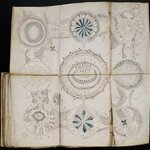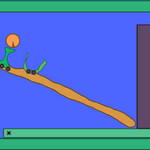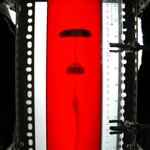Applied Physics

It won't make it readable, but University of Arizona researchers have cracked at least one of the puzzles surrounding the Voynich manuscript, a book filled with drawings and writings nobody can make any sense of.
Using radiocarbon dating, a team led by Greg Hodgins in department of physics says the manuscript's parchment pages date back to the early 15th century, making the book a century older than previously thought.
It's nonsensical structure has kept the Voynich manuscript fascinating for the 50 people who care; rows of text scrawled on visibly aged parchment, flowing around…

A milestone in the international Avogadro project coordinated by the Physikalisch-Technische Bundesanstalt (PTB) has been reached - with the aid of a single crystal of highly enriched 28Si, the Avogadro constant has now been measured more precisely than ever before, with a relative overall uncertainty of 3 · 10-8.
Within the scope of the redefinition of the kilogram, the value NA = 6.02214078(18) · 1023 mol-1 allows a more exact realization of this unit.
This phase of the Avogadro project started in 2003: Several national metrology institutes launched, together with the…

I am taking part in discussions with Sascha Vongehr about the MIT video - here on this site - Falling Faster Than Freefall: A Lesson In Didactics And Critical Thinking.
I have played with the problem in a toy simulator ( see PHUN (download), scroll a bit down) and have fun..
From my post there:
One picture is worth thousand words, and I have about 20 animated. They show snapshots of a simulation of this fascinating little problem. It looks like a video, but there are about 16 different snapshots taken of a running PHUN toy simulator (the engine of it is no toy, though, it is very…

The following is a neat little experiment, the result of which may be counter-intuitive to some of those who embrace the “all bodies fall the same way inside earth’s gravity” doctrine.
Remember, in ages long ago people thought that a feather does not fall as fast as a cannon ball. Nowadays, people are so much smarter, at least they feel so much smarter, and they know that the feather only falls slower due to air resistance. This has become somewhat of a doctrine in the sense that many do not really understand the underlying reasons. They are surprised by the nifty little experiment in the…

In 2 weeks I test for my HAM Technician-class amateur radio license. I confess no particular interest in HAM radio. However, my satellite has a transmitter and needs a call sign. It isn't smart enough to take the test itself, so I have to do it for it.
To pass the Technician's test, I need to answer 75% of the 35 multiple-choice questions (i.e. 26) correctly. I found 3 sites that had particularly well implemented practice exams (including telling you what you got wrong, and why). Thus unarmed, I took the test cold last night, repeatedly.
The 3 test sites of glory: eHam * RadioExam.org…

If you have read any science fiction, you know what a railgun is; instead of using a projectile hurled by an explosion, the idea is to use an electomagnetic current to accelerate a non-explosive bullet at several times the speed of sound. The conductive bullet or artillery moves along electrically charged parallel rails out of the barrel at speeds as high as Mach 7.
The result: a weapon that can hit a target 100 miles or more away within minutes, seven times as far as current ship-mounted guns.
The Office of Naval Research (ONR) achieved a milestone yesterday when it successfully…

Doctor Who is always getting into some pickle or another. Luckily he has advanced technology (and a time traveling police box/telephone booth) to help solve problems.
If defeating Daleks and keeping a temperamental TARDIS functional is in your future, we have good news; Doctor Who's trusty sonic screwdriver gadget could become a reality for DIY types, according to Bristol University engineers who are out to show how a real life version of the fictional screwdriver, which uses sonic technology to open locks and undo screws, could be created.
TARDIS (Time And Relative Dimension(s)…

If you are unaware, a supernova is an exploding star. In certain types of supernovae, the detonation starts with a flame ball buried deep inside a white dwarf and the flame ball is much lighter than its surroundings, so it rises rapidly making a plume topped with an accelerating smoke ring.
A team of physicists have mimicked this type explosion of a supernova in miniature.
“We created a smaller version of this process by triggering a special chemical reaction in a closed container that generates similar plumes and vortex rings,” says Stephen Morris, a University of Toronto physics…

We don't know about yours but this holiday season, the homes of most scientists will be awash with even more coffee than usual. And that means coffee ring stains.
With the volume of science done in coffee houses (like Newton, who ate his meals in one every day) you'd think that anything about coffee, including coffee rings left behind from spillage, would be studied to death.
Not really. In 1997, Robert Deegan and colleagues showed that the coffee ring pattern was due to capillary flow induced by the differential evaporation rates across the drop (1) but since then little has…
Every magnetic material is divided into magnetic domains, called "Weiss domains" after physicist Pierre-Ernest Weiss, who predicted their existence theoretically more than a hundred years ago. In 1907, he recognized that the magnetic moments of atoms within a bounded domain are equally aligned.
Imaging so far been limited to two-dimensional images and material surfaces, so researchers have only ever been able to see a domain in cross section. Now a group have developed a method by which they can image the full spatial structure of magnetic domains, even deep within materials. To…